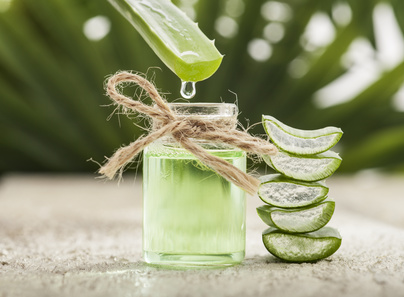Skin cancer is abnormal cell changes in the outermost layers of skin. It’s the most common form of cancer in the world, named for the type of skin cells in which it develops, and classified into two major groups.
It’s a simple equation. Excessive sunlight exposure causes skin cancer because ultraviolet rays alter the genetic material in skin cells. This mutates your skin, attacking the surrounding tissue. And yes, you can get skin cancer from tanning salons. Sorry Snooki.
Most cases of skin cancer are diagnosed in adults between 45 and 54. A long-standing rumor contends that the average person receives 85% of their lifetime UV exposure before their 18th birthday, and childhood sunburns increase your risk.
You’re 50% more likely to develop melanoma if your mother, father, brother or sister had it. Do you have more than 100 moles? That’s another red flag.
While researchers debate the 85% statistic, we know that men are four times more likely to develop skin cancer, though it’s more lethal to women. Skin cancer is most common among caucasians in countries with more sunlight that their ancestral homeland.
Australia – largely settled by the English and Irish – has an exceptionally high rate of skin cancer, with New Zealand not far behind.
Non-Melanomas
Non-melanomas are the two most common skin cancers. Basal cell carcinoma, characterized by redness that may look like an acne scar or eczema, typically appears on the head and neck. Rarely fatal, it can still invade the surrounding tissue and can be classified as malignant.
Squamous cell carcinoma is the more aggressive of the two non-melanomas and develops in the epidermis – the outermost layer of skin. Symptoms of squamous cell carcinoma vary among patients, but a tell-tale sign is scaly skin that reddens from premalignant lesions or actinic keratose. Go to the Skin Cancer Foundation’s site to learn more about how to spot this common ailment.
Melanoma
While non-melanomas are generally less threatening, melanoma is more serious.
Named for the melanocyte skin cells in which it develops, melanoma is a malignant tumour characterized by changes in size, shape or color of a mole. It’s far more aggressive than non-melanomas and accounts for 75% of deaths from skin cancer.
Melanoma tends to appear on extremities like the back and chest. Men often develop melanoma on the back and women on their legs. Don’t let your guard down with melanoma, however, because it can appear on more subtle areas, like the hand, foot, or even in the mouth, vagina, anus or eye.
Not a good time.
Melanoma and Young People
In a disturbing trend that may in part be explained by the rise in indoor tanning, the risk of getting melanoma is six times higher for young people than it was 40 years ago.
This, according to a 2012 study published in Mayo Clinic Proceedings, in which researchers chronicled the number of melanomas between 1970 and 2012 in Olmsted County, Minnesota. Risk was higher for women, with a eight-fold increase in new cases.
Men came in lower, though they were still four times more likely to develop melanoma during this time.
The findings caught researchers by surprise. Most other cancer rates declined during this period, yet melanoma is problematic as ever – in no small part because of tanning beds. That, and extreme sunburns in childhood, for which a single burn that blisters appears to increase risk of melanoma later in life.
If there’s a silver lining to the results, it’s that deaths from melanoma declined in this demographic. An ironic, though more encouraging finding, which the researchers believe suggests that young people are now more aware of melanoma symptoms. And of equal importance, when to see a doctor.
Will I Get Melanoma?
That depends on your genes and lifestyle factors. Estimates suggest that 50% of adults will develop some form of skin cancer, though usually it’s of the less threatening variety.
You’re 50% more likely to develop melanoma if your mother, father, brother or sister had it. Do you have more than 100 moles? That’s another red flag, along with:
Excessive sun exposure
Moles (especially if you have more than 100)
Fair skin (and often light hair color)
History of skin cancer
Weakened immune system
New studies also suggest that people with red hair may be at higher risk of melanoma because they have less melanin. Wealthy caucasian women appear to be more likely to develop melanoma as well, the possible link being more leisure time in the outdoors and vacations in sunny climates. Yes, everything has a price.
Consider the ABCDEs of melanoma. Watch the moles on your body for:
Assymetry – The two halves of the mole will probably not match.
Borders – Early melanoma may show up as a mole with irregular borders. The edges could be scalloped or notched, for example.
Color – Different colored moles are another warning sign of melanoma. They might be different shades of brown, tan or black, or red, blue or some other color.
Diameter – Pay close attention to moles larger in diameter than ¼ inch – 6mm for folks on the metric system. Put another way, it warrants a closer look if it’s bigger than the eraser on your pencil.
 Evolving – Any change to a mole, including the previous factors described here, is a warning sign.
Evolving – Any change to a mole, including the previous factors described here, is a warning sign.
The good news is that melanoma is both visible and treatable, assuming you spot the signs and deal with it early. Speak with your doctor for more information about treatment for melanoma and skin cancer in general.
Prevention of Skin Cancer
Skin cancer is largely preventable. You can minimize your risk with the summer skin care tips you heard as a kid. Now that it’s 2013, and you’re an adult, we’ll take that a step further, with a simple rule: don’t tan. Just don’t do it, and if you burnt as a kid (and most of us did), watch your skin closely for skin cancer symptoms.
Of course, it’s not always possible to avoid the sun, and if you find yourself in that category, consider the following:
Avoid the Sun Between 10AM and 4PM – If possible, avoid sun exposure during these hours, when the sun is hottest.
Cover Up – Wear loose-fitting, long-sleeved clothing. Ideally that includes a wide-brimmed hat to shade your ears and neck, a tight-woven shirt and pants. Avoid sandals on hot days too – wear shoes instead.
Wear a Broad Spectrum Sunscreen Between 15 and 50 – Not all sunscreens pass muster, according to a new study by Consumer Reports, which cites Up & Up SPORT SPF50 by Target as one of the best products, and All Terrain AquaSport SPF 30 and Badger Unscented SPF 34 among the worst for protection from UVB radiation. Whatever you choose, apply liberally, and reapply every 2 hours.
Use a Higher SPF at Higher Elevations – The higher you go, the stronger sunscreen you’ll need up to SPF 50. There’s scant evidence that a sunscreen is effective beyond that level, however.
Don’t Use Tanning Salons – Frankly, there may come a day when tanning beds get lumped in the same category as smoking. Don’t fake and bake. As an alternative, eat foods high in carotenoids, like carrots, red peppers and raspberries. The same pigment that colors these vegetables is linked to a yellow, attractive glow for the skin. Same effect, and a heckuva lot better than tanning.
Sun tanning and exposure to UV radiation is by far the leading cause of skin cancer. That risk goes up if you’re a smoker, with regular exposure to chemicals including arsenic, coal and some kinds of oil. In the off-chance you’ve had an organ transplant, you’re 200 times more likely to develop this ailment, that, according to the Skin Cancer Foundation, half of adult Americans will develop.
And yet, you’ve got more than enough tools required to avoid skin cancer, and survive it if you can’t. No, you can’t undo that blistering burn you got at the waterpark as a kid – and who among us didn’t get one of those? – but you can moderate your time in the sun now, with awareness. Cover up and slap on that sunscreen. Most of all, watch your body. Be aware of the symptoms of skin cancer and speak with your doctor at the first sight of changes.




